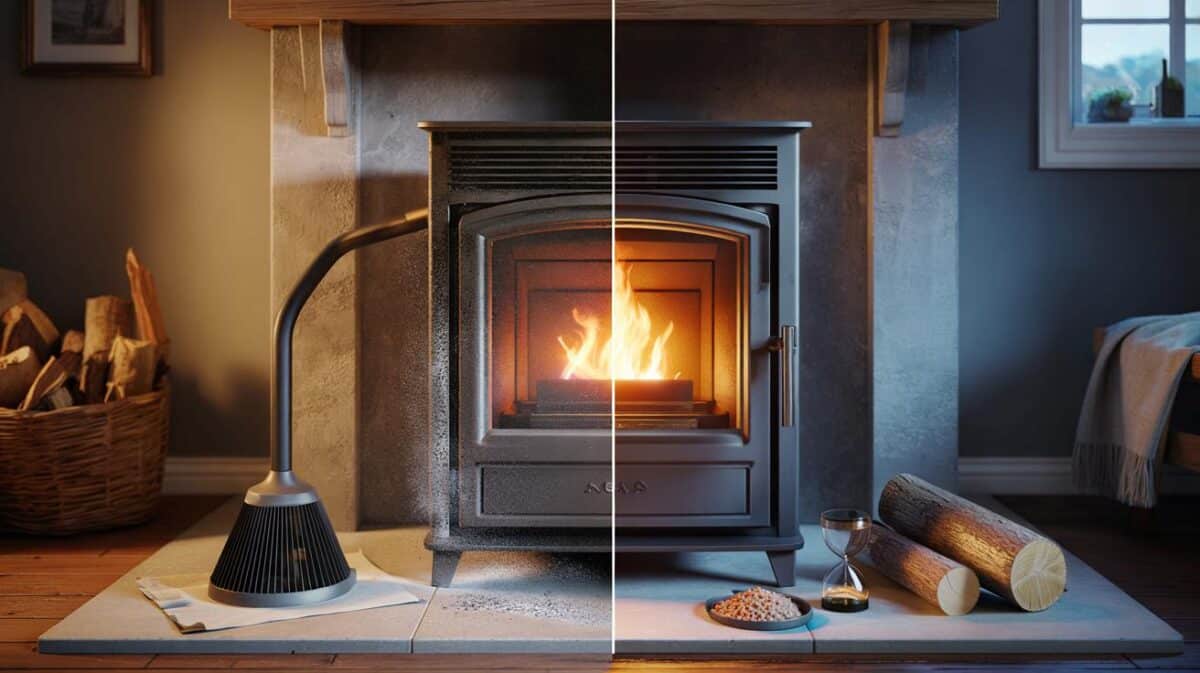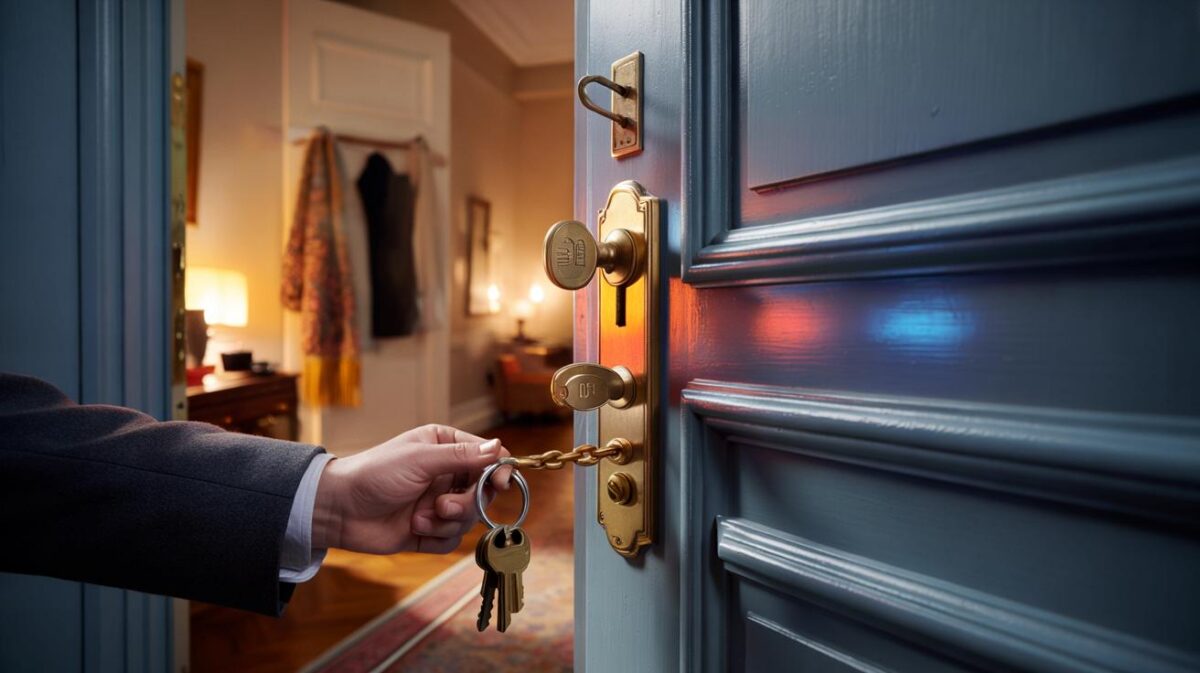From Paris to Peckham, a quiet revolution is happening above the pillows. Upholstered and timber slabs are being replaced with tailored wallpaper panels and murals that carve out a focal point without stealing floor space or draining your budget.
Why classic headboards are losing ground
Designers point to three sticking points: space, sameness and spend. A traditional headboard, whether tufted, velvet or oak, projects 10 to 20 centimetres into the room. In a compact flat, that depth costs you circulation space and stops the bed sitting flush against the wall. Visual fatigue plays a part as well. The once-standard buttoned number now feels everywhere, making many bedrooms look alike.
Money nudges the pivot. Good upholstery rarely comes cheap, especially when you factor in delivery and fixing. Then there’s the permanence problem: once installed, a bulky headboard is hard to tweak when your taste, tenancy or floor plan changes.
Designers report clients reclaiming up to 0.4 m² around the bed by swapping a bulky headboard for a flat wall treatment.
What the pros are choosing instead
The rising favourite is the “wall headboard” — a bespoke strip, panel or full mural of wallpaper placed where a headboard would sit. It frames the bed, defines the sleeping zone and sets a mood, all while staying flush to the wall. A single drop can act like a halo; a wide panel can mimic a grand headboard; a panoramic scene can stretch the room visually.
Typical outlay starts around €39/m² and many complete schemes land under €200, including adhesive and tools.
Design moves that work now
- Deep greens and smoky blues add cocooning depth for autumn without darkening the whole room.
- Seventies-flavoured geometrics deliver rhythm and help anchor mismatched bedside tables.
- Textured prints (grasscloth looks, linen weaves, woodgrain) warm a stark new-build wall.
- Soft panoramas behind a king-size bed create width in narrow rooms.
- Playful stars or graphic maps grow with children when paired with neutral bedding.
The trick sits in coordination. Echo one colour from the wallpaper into the duvet or cushions, then vary texture: washed cotton, relaxed linen, a velvet throw for contrast. Keep bedside lighting simple so the print can lead.
The speed and ease factor
Today’s headboard wallpapers come pre-pasted, peel-and-stick or custom-cut to size. Most arrive in numbered drops with a basic tool kit. A careful amateur can measure, prep and apply in an evening.
Plan for under two hours for a standard queen-width panel; no dust, no power tools, no wall anchors.
Maintenance tilts the argument further. Wipeable surfaces shrug off handprints and the odd splash of cocoa. UV-resistant inks hold colour, even on sunlit walls. Fire-rated backings and moisture-tolerant options suit guest rooms near en-suites.
Numbers that settle nerves
Custom production often completes in 72 hours, with parcel delivery in 48–72 hours thereafter.
Some brands offer a 15-day “swap if you’re not happy” window before installation, plus on-screen previews to reduce guesswork.
Headboard versus wall headboard: the practical trade-off
| Feature | Classic headboard | Wallpaper headboard |
|---|---|---|
| Typical depth | 10–20 cm into the room | 0 cm; sits flush to wall |
| Project cost | €250–€1,000+ installed | €120–€200 for most bedrooms |
| Install time | 1–2 hours with fixings, two people | 60–120 minutes, one careful person |
| Renter friendly | Low; leaves holes | High; removable options available |
| Maintenance | Vacuum, spot clean fabric | Wipe with damp sponge |
| Design flexibility | Limited shapes and fabrics | Infinite colour, print and scale |
How to get the look without mistakes
Measure and map
Mark the bed’s width and planned pillow height on the wall. Allow at least 10 cm overlap beyond each side of the mattress for balance, more for a dramatic frame. Check for sockets and switches; plan clean cut-outs.
Choose the right substrate
For painted plaster, pre-pasted or paste-the-wall works well. For rentals, consider removable vinyl. In a room near a shower, pick a moisture-resistant finish. Ask for fire-rated backings for added peace of mind.
Prep counts
Fill hairline cracks, sand lightly, and dust. A smooth, sealed surface prevents bubbles. Prime fresh plaster so paste doesn’t dry too fast. Unroll drops flat for an hour so they relax before hanging.
Hang with intent
Start at the centreline of the bed for symmetry. Use a level to keep edges true. Butt, don’t overlap, the seams. Smooth from the centre out to chase air. Trim at skirting and above the mattress line with a sharp blade.
Who benefits most right now
Renters who can’t drill. Couples juggling a pram and a cot in the same room. Home workers whose bedroom doubles as an office and needs a quick visual reset at night. Anyone squeezed by energy costs who wants impact without a full redecorate.
A printed panel acts like a visual room divider, zoning the bed from a desk or nursery corner without adding furniture.
Beyond wallpaper: other headboard-free ways to structure the bed
- Painted arches or rectangles in a contrasting colour give crisp definition in half an hour.
- Vertical timber slats fixed as a shallow screen add texture at a depth of just 1–2 cm.
- A shallow shelf ledge doubles as a perch for books and lamps, keeping bedside tables light.
- Ceiling-hung fabric canopies soften acoustics and hide uneven walls.
- Acoustic cork panels warm the look and dampen late-night noise from neighbours.
What to pair with a wall headboard
Use slimmer bedside tables to keep the mural visible. Choose lamps with small shades or wall-mounted swing arms. Keep artwork minimal above pillow height; one centred piece on a narrow wall or none on a panoramic print. Layer one patterned cushion that repeats the wallpaper’s secondary colour and keep the rest plain.
Risks to watch and how to avoid them
High humidity can lift edges; specify a moisture-rated product and run an extractor if an en-suite sits nearby. Strong texture on the wall telegraphs through thin paper; skim or line first. Fresh paint needs time to cure; wait at least two weeks before application. Test a removable strip in an inconspicuous corner to confirm clean release on your paint type.
Costs, savings and the real-world pay-off
At €39/m², a queen-width panel roughly 2.2 m x 1.2 m uses about 2.6 m² of material — around €100 in paper, plus paste and a basic tool kit. Most households wrap the project under €200. You reclaim floor space, cut delivery waiting, and avoid fixings. When tastes change, you pull it off and start again without calling a joiner.
If you want to go further
Try a simulation: sketch the wall to scale and test panel widths, arch shapes and colour blocks with masking tape before you buy. Simulate bedside light throw in the evening; warm light can yellow a cool wallpaper, so sample under your actual bulbs. For noise-prone homes, combine a printed headboard with a thin acoustic underlay to gain comfort without adding bulk.
For families, plan a scheme that evolves. Choose a neutral base mural and swap bedding by season. Add a narrow, continuous shelf across the width of the panel for storybooks and small art, keeping drilled holes above mattress height so future changes remain hidden by pillows.








